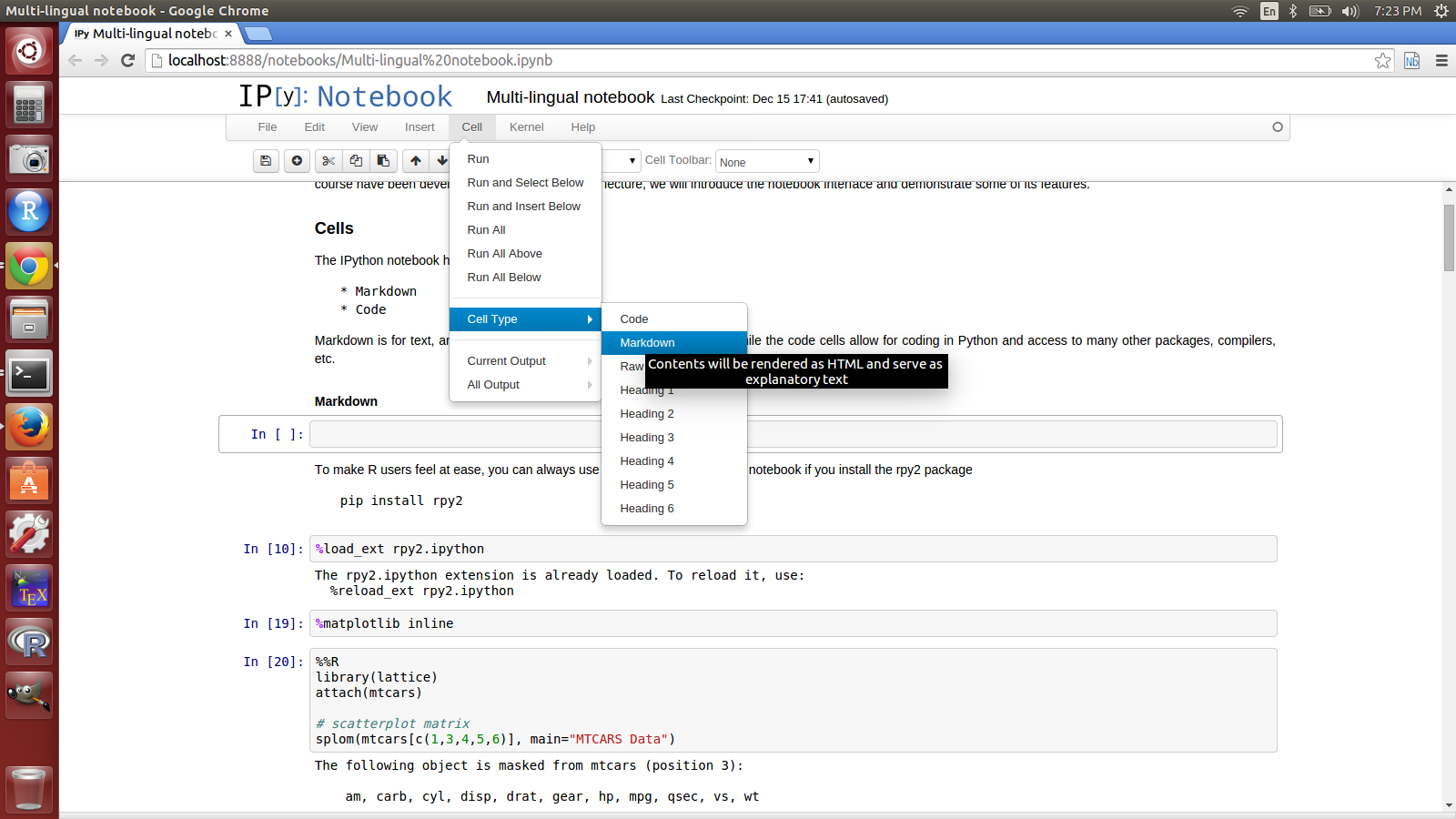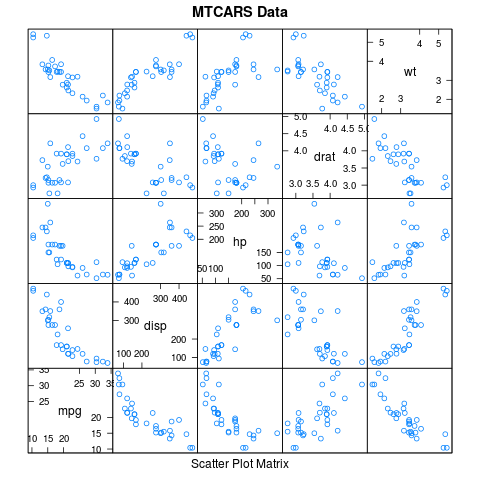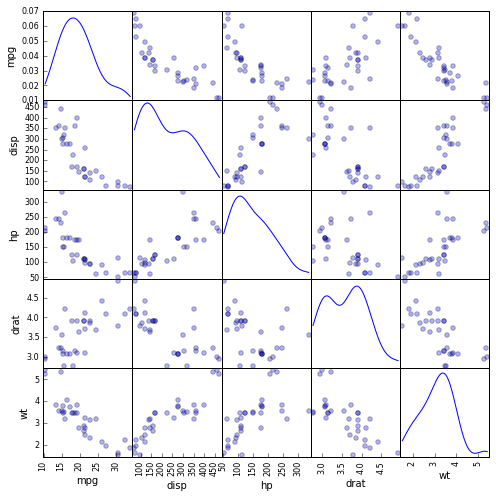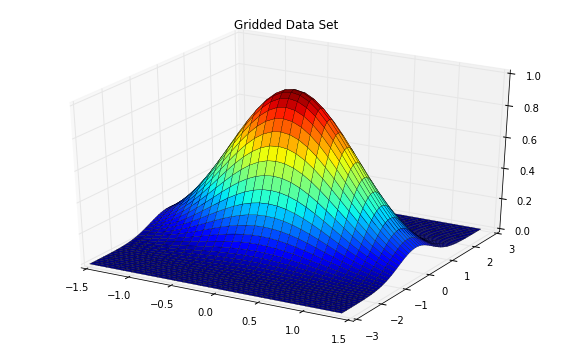Getting started with Python and the IPython notebook¶
The IPython notebook is an interactive, web-based environment that allows one to combine code, text and graphics into one unified document. All of the lectures in this course have been developed using this tool. In this lecture, we will introduce the notebook interface and demonstrate some of its features.
Cells¶
The IPython notebook has two types of cells:
* Markdown
* Code
Markdown is for text, and even allows some typesetting of mathematics, while the code cells allow for coding in Python and access to many other packages, compilers, etc.
Markdown¶
To enter a markdown cell, just choose the cell tab and set the type to ‘Markdown’.
from IPython.display import Image
Image(filename='screenshot.png')

The current cell is now in Markdown mode, and whatever is entered is assumed to be markdown code. For example, text can be put into italics or bold. A bulleted list can be entered as follows:
Bulleted List * Item 1 * Item 2
Markdown has many features, and a good reference is located at:
Code Cells¶
Code cells take Python syntax as input. We will see a lot of those shortly, when we begin our introduction to Python. For the moment, we will highlight additional uses for code cells.
Magic Commands¶
Magic commands work a lot like OS command line calls - and in fact, some are just that. To get a list of available magics:
%lsmagic
Available line magics:
%alias %alias_magic %autocall %automagic %autosave %bookmark %cat %cd %clear %colors %config %connect_info %cp %debug %dhist %dirs %doctest_mode %ed %edit %env %gui %hist %history %install_default_config %install_ext %install_profiles %killbgscripts %ldir %less %lf %lk %ll %load %load_ext %loadpy %logoff %logon %logstart %logstate %logstop %ls %lsmagic %lx %macro %magic %man %matplotlib %mkdir %more %mv %notebook %page %pastebin %pdb %pdef %pdoc %pfile %pinfo %pinfo2 %popd %pprint %precision %profile %prun %psearch %psource %pushd %pwd %pycat %pylab %qtconsole %quickref %recall %rehashx %reload_ext %rep %rerun %reset %reset_selective %rm %rmdir %run %save %sc %store %sx %system %tb %time %timeit %unalias %unload_ext %who %who_ls %whos %xdel %xmode
Available cell magics:
%%! %%HTML %%SVG %%bash %%capture %%debug %%file %%html %%javascript %%latex %%perl %%prun %%pypy %%python %%python2 %%python3 %%ruby %%script %%sh %%svg %%sx %%system %%time %%timeit %%writefile
Automagic is ON, % prefix IS NOT needed for line magics.
Notice there are line and cell magics. Line magics take the entire line as argument, while cell magics take the cell. As ‘automagic’ is on, we can omit the % when making calls to line magics.
ls
IntroductionToPython.ipynb IPythonNotebookPolyglot.ipynb
IPythonNotebookIntroduction.ipynb [0m[01;35mscreenshot.png[0m
cp IntroductionToPython.ipynb IP2.ipynb
ls
IntroductionToPython.ipynb IPythonNotebookIntroduction.ipynb [0m[01;35mscreenshot.png[0m
IP2.ipynb IPythonNotebookPolyglot.ipynb
rm IP2.ipynb
ls
IntroductionToPython.ipynb IPythonNotebookPolyglot.ipynb
IPythonNotebookIntroduction.ipynb [0m[01;35mscreenshot.png[0m
We can make all the above system calls in one cell, by using the cell magic, %%system
%%system
cp IntroductionToPython.ipynb IP2.ipynb
ls
rm IP2.ipynb
ls
['IntroductionToPython.ipynb',
'IP2.ipynb',
'IPythonNotebookIntroduction.ipynb',
'IPythonNotebookPolyglot.ipynb',
'screenshot.png',
'IntroductionToPython.ipynb',
'IPythonNotebookIntroduction.ipynb',
'IPythonNotebookPolyglot.ipynb',
'screenshot.png']
But magics are much more than system calls! We can even use R from within the IPython notebook if you install the rpy2 package
pip install rpy2
%load_ext rpy2.ipython
%matplotlib inline
%%R
library(lattice)
attach(mtcars)
# scatterplot matrix
splom(mtcars[c(1,3,4,5,6)], main="MTCARS Data")

Matlab works too:
pip install pymatbridge
!pip install --upgrade pymatbridge
Requirement already up-to-date: pymatbridge in /home/bitnami/anaconda/lib/python2.7/site-packages
Cleaning up...
import pymatbridge as pymat
ip = get_ipython()
pymat.load_ipython_extension(ip)
%%matlab
xgv = -1.5:0.1:1.5;
ygv = -3:0.1:3;
[X,Y] = ndgrid(xgv,ygv);
V = exp(-(X.^2 + Y.^2));
surf(X,Y,V)
title('Gridded Data Set', 'fontweight','b');
---------------------------------------------------------------------------
RuntimeError Traceback (most recent call last)
<ipython-input-17-8ef3de53fe4f> in <module>()
----> 1 get_ipython().run_cell_magic(u'matlab', u'', u"\nxgv = -1.5:0.1:1.5;\nygv = -3:0.1:3;\n[X,Y] = ndgrid(xgv,ygv);\nV = exp(-(X.^2 + Y.^2));\nsurf(X,Y,V)\ntitle('Gridded Data Set', 'fontweight','b');")
/home/bitnami/anaconda/lib/python2.7/site-packages/IPython/core/interactiveshell.pyc in run_cell_magic(self, magic_name, line, cell)
2160 magic_arg_s = self.var_expand(line, stack_depth)
2161 with self.builtin_trap:
-> 2162 result = fn(magic_arg_s, cell)
2163 return result
2164
/home/bitnami/anaconda/lib/python2.7/site-packages/pymatbridge/matlab_magic.pyc in matlab(self, line, cell, local_ns)
/home/bitnami/anaconda/lib/python2.7/site-packages/IPython/core/magic.pyc in <lambda>(f, *a, **k)
191 # but it's overkill for just that one bit of state.
192 def magic_deco(arg):
--> 193 call = lambda f, *a, **k: f(*a, **k)
194
195 if callable(arg):
/home/bitnami/anaconda/lib/python2.7/site-packages/pymatbridge/matlab_magic.pyc in matlab(self, line, cell, local_ns)
215 e_s += "\n-----------------------"
216 e_s += "\nAre you sure Matlab is started?"
--> 217 raise RuntimeError(e_s)
218
219
RuntimeError: There was an error running the code:
xgv = -1.5:0.1:1.5;
ygv = -3:0.1:3;
[X,Y] = ndgrid(xgv,ygv);
V = exp(-(X.^2 + Y.^2));
surf(X,Y,V)
title('Gridded Data Set', 'fontweight','b');
-----------------------
Are you sure Matlab is started?
And it is also OK if you prefer Octave. Just type
pip install oct2py
%load_ext octavemagic
%%octave
A = reshape(1:4,2,2);
b = [36; 88];
A\b
[L,U,P] = lu(A)
[Q,R] = qr(A)
[V,D] = eig(A)
---------------------------------------------------------------------------
IndexError Traceback (most recent call last)
<ipython-input-23-fd6df88570f6> in <module>()
----> 1 get_ipython().run_cell_magic(u'octave', u'', u'\nA = reshape(1:4,2,2); \nb = [36; 88];\nA\\b\n[L,U,P] = lu(A)\n[Q,R] = qr(A)\n[V,D] = eig(A)')
/home/bitnami/anaconda/lib/python2.7/site-packages/IPython/core/interactiveshell.pyc in run_cell_magic(self, magic_name, line, cell)
2160 magic_arg_s = self.var_expand(line, stack_depth)
2161 with self.builtin_trap:
-> 2162 result = fn(magic_arg_s, cell)
2163 return result
2164
/home/bitnami/anaconda/lib/python2.7/site-packages/IPython/extensions/octavemagic.pyc in octave(self, line, cell, local_ns)
/home/bitnami/anaconda/lib/python2.7/site-packages/IPython/core/magic.pyc in <lambda>(f, *a, **k)
191 # but it's overkill for just that one bit of state.
192 def magic_deco(arg):
--> 193 call = lambda f, *a, **k: f(*a, **k)
194
195 if callable(arg):
/home/bitnami/anaconda/lib/python2.7/site-packages/IPython/extensions/octavemagic.pyc in octave(self, line, cell, local_ns)
327 except (oct2py.Oct2PyError) as exception:
328 msg = exception.message
--> 329 msg = msg.split('# ___<end_pre_call>___ #')[1]
330 msg = msg.split('# ___<start_post_call>___ #')[0]
331 raise OctaveMagicError('Octave could not complete execution. '
IndexError: list index out of range
We will redo these examples in Python¶
import pandas as pd
import numpy as np
import statsmodels.api as sm
from pandas.tools.plotting import scatter_matrix
# First we will load the mtcars dataset and do a scatterplot matrix
mtcars = sm.datasets.get_rdataset('mtcars')
df = pd.DataFrame(mtcars.data)
scatter_matrix(df[[0,2,3,4,5]], alpha=0.3, figsize=(8, 8), diagonal='kde', marker='o');

# Next we will do the 3D mesh
xgv = np.arange(-1.5, 1.5, 0.1)
ygv = np.arange(-3, 3, 0.1)
[X,Y] = np.meshgrid(xgv, ygv)
V = np.exp(-(X**2 + Y**2))
import matplotlib.pyplot as plt
from mpl_toolkits.mplot3d import Axes3D
fig = plt.figure(figsize=(10,6))
ax = fig.add_subplot(111, projection='3d')
ax.plot_surface(X, Y, V, rstride=1, cstride=1, cmap=plt.cm.jet, linewidth=0.25)
plt.title('Gridded Data Set');

# And finally, the matrix manipulations
import scipy
A = np.reshape(np.arange(1, 5), (2,2))
b = np.array([36, 88])
ans = scipy.linalg.solve(A, b)
P, L, U = scipy.linalg.lu(A)
Q, R = scipy.linalg.qr(A)
D, V = scipy.linalg.eig(A)
print 'ans =\n', ans, '\n'
print 'L =\n', L, '\n'
print "U =\n", U, '\n'
print "P = \nPermutation Matrix\n", P, '\n'
print 'Q =\n', Q, '\n'
print "R =\n", R, '\n'
print 'V =\n', V, '\n'
print "D =\nDiagonal matrix\n", np.diag(abs(D)), '\n'
ans =
[ 16. 10.]
L =
[[ 1. 0. ]
[ 0.33333333 1. ]]
U =
[[ 3. 4. ]
[ 0. 0.66666667]]
P =
Permutation Matrix
[[ 0. 1.]
[ 1. 0.]]
Q =
[[-0.31622777 -0.9486833 ]
[-0.9486833 0.31622777]]
R =
[[-3.16227766 -4.42718872]
[ 0. -0.63245553]]
V =
[[-0.82456484 -0.41597356]
[ 0.56576746 -0.90937671]]
D =
Diagonal matrix
[[ 0.37228132 0. ]
[ 0. 5.37228132]]
Using Julia¶
%load_ext julia.magic
---------------------------------------------------------------------------
ImportError Traceback (most recent call last)
<ipython-input-30-5bcfdab8fb0a> in <module>()
----> 1 get_ipython().magic(u'load_ext julia.magic')
/home/bitnami/anaconda/lib/python2.7/site-packages/IPython/core/interactiveshell.pyc in magic(self, arg_s)
2203 magic_name, _, magic_arg_s = arg_s.partition(' ')
2204 magic_name = magic_name.lstrip(prefilter.ESC_MAGIC)
-> 2205 return self.run_line_magic(magic_name, magic_arg_s)
2206
2207 #-------------------------------------------------------------------------
/home/bitnami/anaconda/lib/python2.7/site-packages/IPython/core/interactiveshell.pyc in run_line_magic(self, magic_name, line)
2124 kwargs['local_ns'] = sys._getframe(stack_depth).f_locals
2125 with self.builtin_trap:
-> 2126 result = fn(*args,**kwargs)
2127 return result
2128
/home/bitnami/anaconda/lib/python2.7/site-packages/IPython/core/magics/extension.pyc in load_ext(self, module_str)
/home/bitnami/anaconda/lib/python2.7/site-packages/IPython/core/magic.pyc in <lambda>(f, *a, **k)
191 # but it's overkill for just that one bit of state.
192 def magic_deco(arg):
--> 193 call = lambda f, *a, **k: f(*a, **k)
194
195 if callable(arg):
/home/bitnami/anaconda/lib/python2.7/site-packages/IPython/core/magics/extension.pyc in load_ext(self, module_str)
61 if not module_str:
62 raise UsageError('Missing module name.')
---> 63 res = self.shell.extension_manager.load_extension(module_str)
64
65 if res == 'already loaded':
/home/bitnami/anaconda/lib/python2.7/site-packages/IPython/core/extensions.pyc in load_extension(self, module_str)
96 if module_str not in sys.modules:
97 with prepended_to_syspath(self.ipython_extension_dir):
---> 98 __import__(module_str)
99 mod = sys.modules[module_str]
100 if self._call_load_ipython_extension(mod):
ImportError: No module named julia.magic
%%julia
1 + sin(3)
ERROR: Cell magic %%julia not found.
%%julia
s = 0.0
for n = 1:2:10000
s += 1/n - 1/(n+1)
end
s # an expression on the last line (if it doesn't end with ";") is printed as "Out"
%%julia
f(x) = x + 1
f([1,1,2,3,5,8])
Using Perl¶
%%perl
use strict;
use warnings;
print "Hello World!\n";
We hope these give you an idea of the power and flexibility this notebook environment provides!